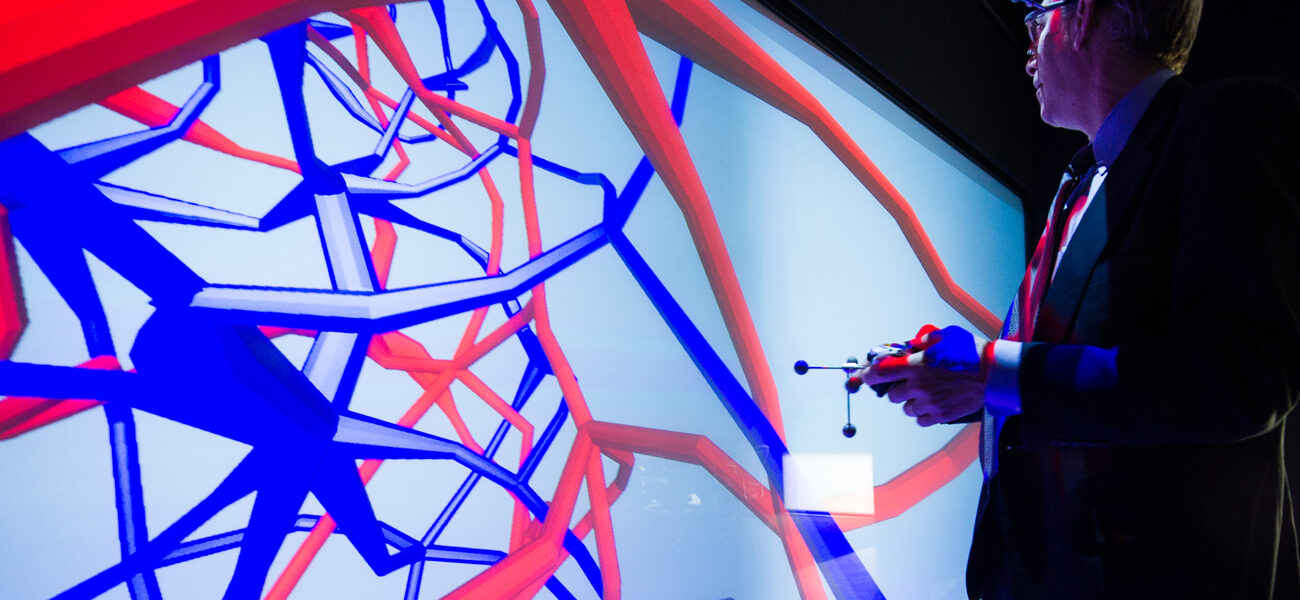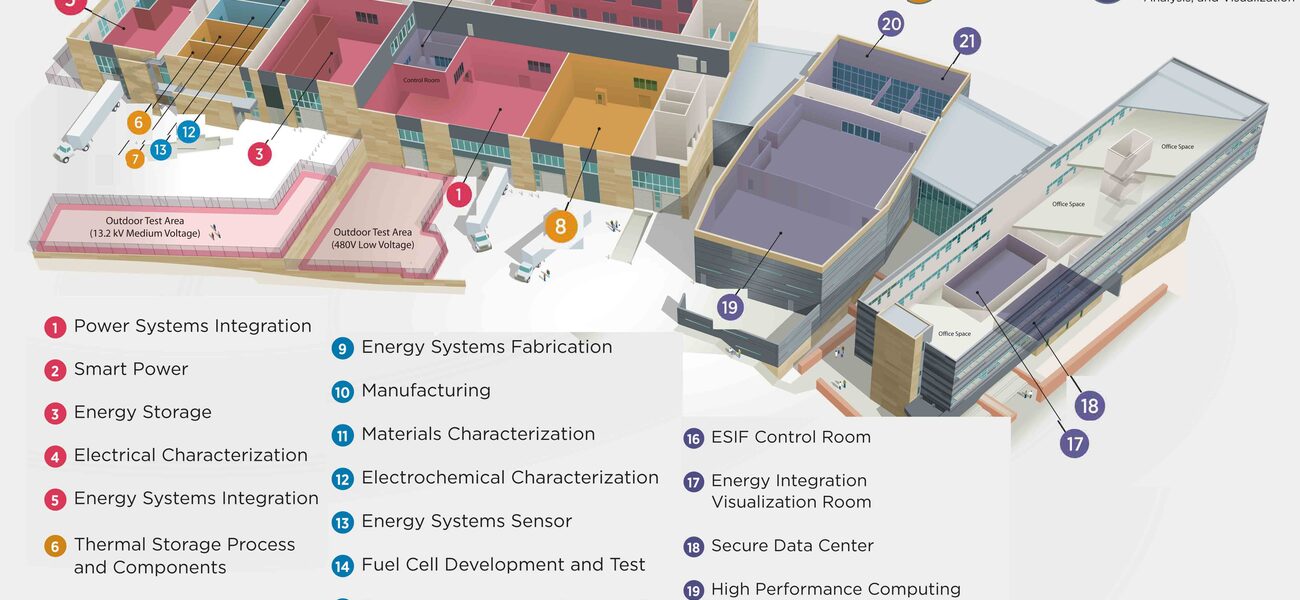The Energy Systems Integration Facility (ESIF) at the Energy Department’s National Renewable Energy Laboratory uses hardware-in-the-loop prototyping at the low- to mega-watt-scale power capability to develop and validate the next generation of energy production and infrastructure, giving NREL and its strategic industry partners the opportunity to evaluate how technologies will work together in a real-world environment. The primary focus of ESIF is micro grid/smart grid research. The building houses 200 scientists and engineers in a private, public-sector, and academic partnership.
The facility consists of four space types: office (43,750 gsf), data center (26,750 gsf), collaboration and visualization center (23,900 gsf), and 14 high bay labs totaling 88,100 gsf with outdoor test areas. It contains five electricity labs (Power Systems Integration, Smart Power, Energy Storage, Electrical Characterization, and Energy Systems Integration), three thermal laboratories (Thermal Systems, Thermal Storage Materials, and Optical Characterization and Thermal Systems), and seven fuel laboratories (Energy System Fabrication, Manufacturing, Materials Characterization, Electrochemical, Energy Systems Sensor, Fuel Cell Development, and High-Pressure Testing.)
Unique capabilities include:
- Hardware-in-the-loop at megawatt-scale power in the Smart Power Lab allows for the research and development of the power electronics components, circuits, and controls used in clean and sustainable energy integration. It allows researchers and manufacturers to conduct integration tests at full power and actual load levels in real-time simulation, protected by lockout-tagout systems, and evaluate component and system performance before going to market.
- Data analysis and visualization capabilities are fully integrated with hardware-in-the-loop power capabilities, an electrical distribution bus, a supervisory control and data acquisition (SCADA) system, and petaflop-scale computing, allowing researchers and NREL partners to visualize complex systems simulations and operations in a completely virtual environment.
- The High Performance Computing Data Center (HPCDC), housing one of the world’s fastest computing systems dedicated to energy efficiency and renewable energy technologies, expands the laboratory’s capabilities in modeling and simulation of renewable energy technologies and their integration into the existing energy infrastructure. The petaflop-scale system enables large-scale modeling and simulation of material properties, processes, and fully integrated systems that would be too expensive, or even impossible, to study by direct experimentation. Heat from the HPCDC is captured in the form of 95-degree-F water, which is reused to heat the office areas and to precondition make-up air for the high bay laboratories.
- Research Electrical Distribution Bus (REDB) and SCADA systems are integrated throughout the ESIF, allowing the REDB to function as the ultimate power integration “circuit” capable of utilizing multiple AC and DC buses that connect multiple sources of energy and interconnect laboratories and experiments to test and simulate equipment. Running parallel with the REDB is the SCADA system that monitors and controls facility-based processes and gathers and disseminates real-time data for collaboration and visualization. Parallel with the REDB are the thermal and fuel infrastructures built into the ESIF that together provide a variety of electricity, thermal power, and fuel type connections.
The LEED Platinum building was named 2014 “Lab of the Year” by R&D magazine.
| Organization | Project Role |
|---|---|
|
SmithGroup
|
Architect and Landscape Architect
|
|
JE Dunn Construction
|
Builder
|
|
SmithGroup
|
Laboratory Planner and Interior Designer
|
|
SmithGroup
|
MEP Engineer (Central Building System, Data Center, and Office)
|
|
Affiliated Engineers, Inc. (AEI)
|
MEP Engineer (Laboratory)
|
|
Integral Group
|
MEP Engineer (Data Center Consultant, Energy Modeling)
|
|
Martin and Martin
|
Structural and Civil Engineer
|
|
Mazzetti Nash Lipsey Burch
|
Commissioning Agent
|
|
Convergent Technologies
|
Audio Visual
|
|
Colin Gordon Associates
|
Acoustical and Vibration Consultant
|
|
CPP, Inc.
|
Wind, Air Quality, and Exhaust Discharge Optimization Consultant
|
|
Hamilton Scientific
|
Lab Casework and Fume Hoods
|
|
Hewlett-Packard
|
High Performance Computers
|




